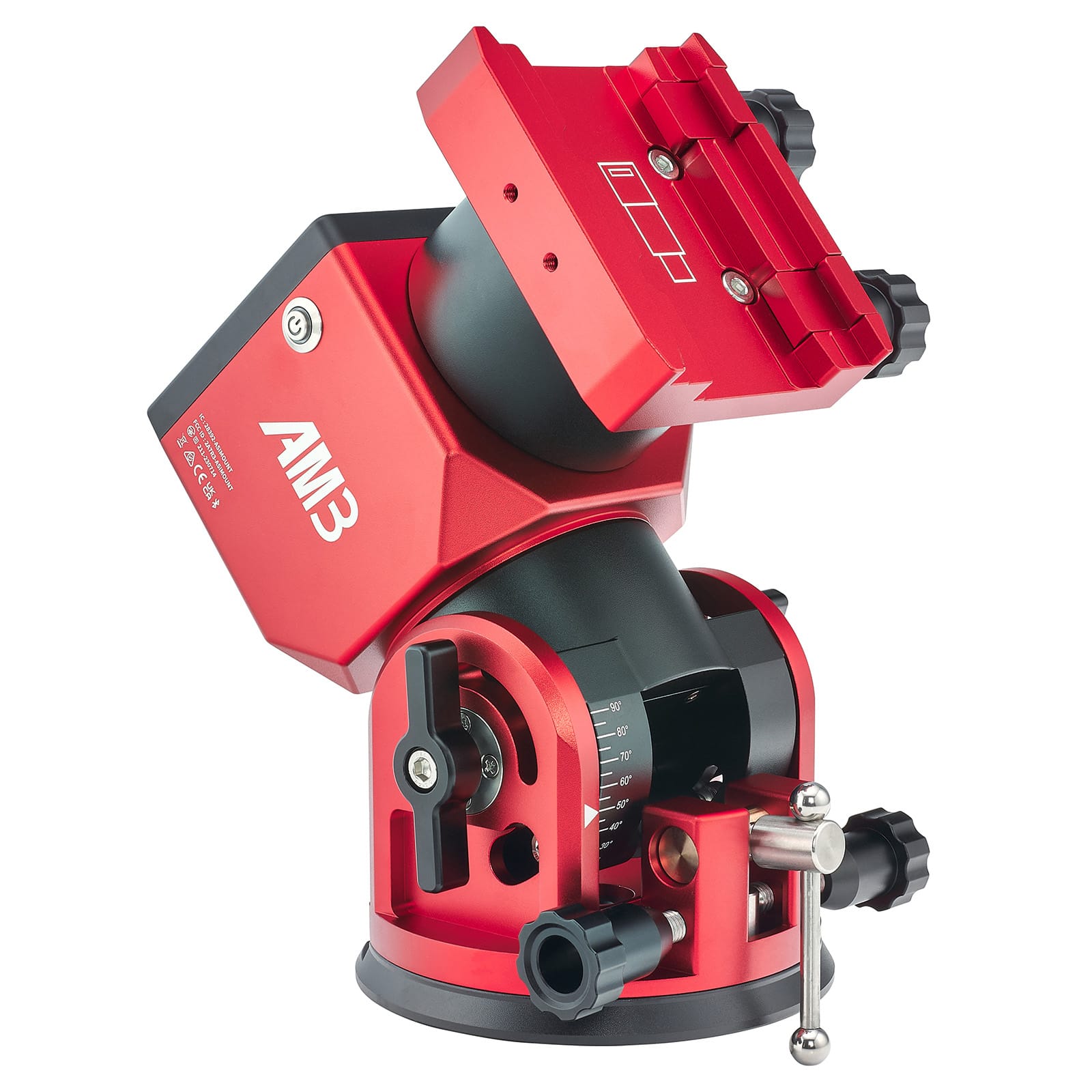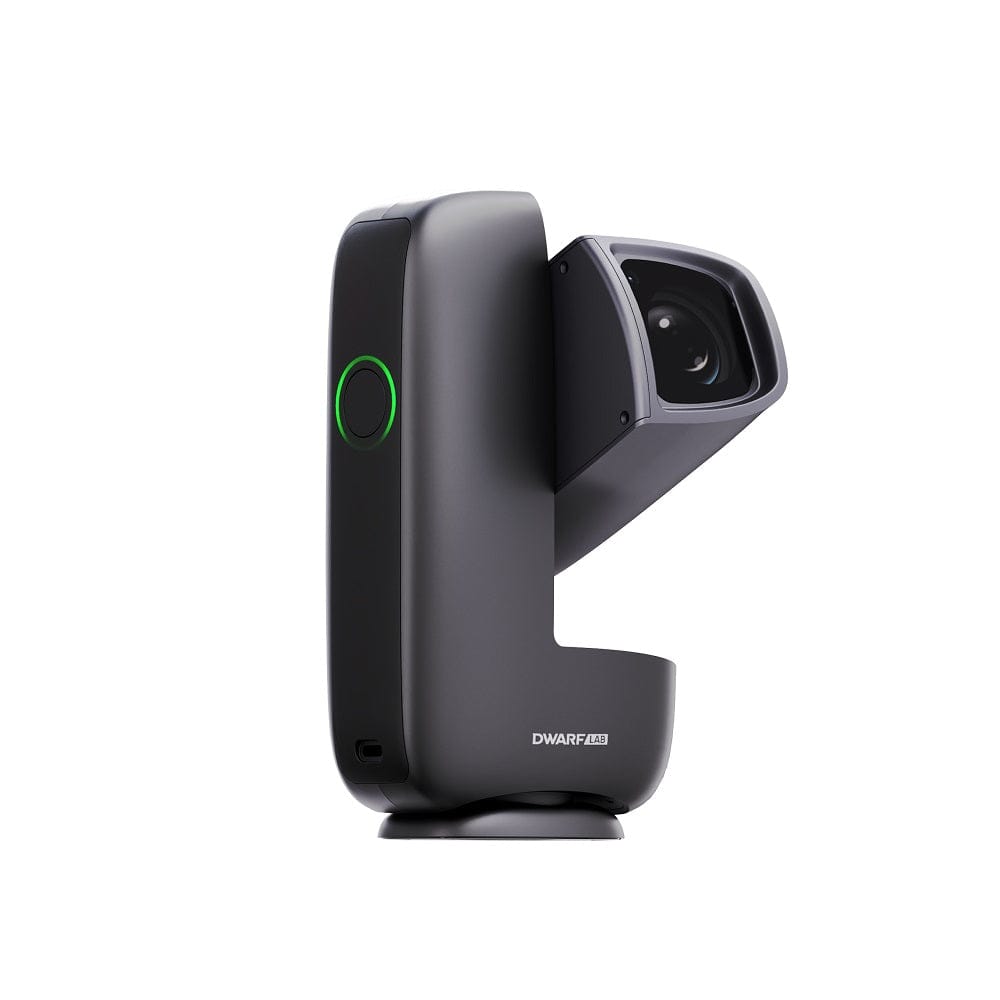Introduction and Key Features
The ZWO AM3 is part of ZWO’s harmonic drive mount series, known for their lightweight yet powerful designs. The AM3, weighing only 3.9 kg, is optimized for portability without compromising on performance. This mount is capable of carrying up to 8 kg without a counterweight and up to 13 kg with one, making it suitable for both travel setups and larger imaging systems. It features a strain wave gear transmission, ensuring high precision, low periodic error, and stable performance even during long imaging sessions. Additionally, the AM3 offers dual-mode operation (equatorial and alt-azimuth), providing flexibility for astrophotographers and visual observers alike.
The mount is designed with an emphasis on user-friendly controls. With integrated Wi-Fi, Bluetooth, and USB connectivity, users can control the AM3 through the ASI Mount app or ASCOM software for complete remote management. It’s also compatible with the ASIAIR ecosystem, allowing for seamless integration into a ZWO-heavy setup.
Overview
- Lightweight, powerful design: Weighs just 3.9 kg yet supports up to 13 kg with a counterweight.
- High precision tracking: Low periodic error (+/- 15 arcseconds) ensures smooth performance for long-exposure astrophotography.
- Versatile dual-mode operation: Seamlessly switches between equatorial and alt-azimuth modes.
- Advanced control options: Offers Wi-Fi, Bluetooth, USB, and ASCOM compatibility for seamless connectivity.
Build Quality and Design
The ZWO AM3 is constructed with a focus on balancing portability and stability. It is compact and lightweight, making it ideal for astrophotographers who frequently travel to remote locations. Despite its light weight, it is capable of supporting substantial optical systems. The Losmandy and Vixen-style dovetail saddle provides compatibility with a wide range of telescopes and imaging equipment, ensuring secure mounting even with larger setups.
One of the standout features is its fully sealed design, which protects the strain wave gears from dust, moisture, and corrosion. This makes the AM3 particularly durable, especially when used in outdoor environments where dust and dew can pose challenges to equipment. Additionally, the mount is equipped with a power-off brake, which prevents the telescope from falling in the event of a power failure—a crucial feature for safeguarding valuable optics.
The mount’s latitude adjustment range (0°-90°) and azimuth fine adjustment knobs allow for precise alignment, making it suitable for use across various latitudes, including near the equator or poles. These adjustments are smooth, making it easy to set up for accurate polar alignment in equatorial mode.
Performance in the Field
When it comes to performance, the AM3 excels in tracking accuracy. With a periodic error of less than ±15 arcseconds, it provides smooth and stable tracking during long-exposure imaging. This level of precision is critical for astrophotography, as it ensures stars and celestial objects remain sharp and free from trailing. Periodic error refers to the slight mechanical inaccuracies inherent in most mounts, but the strain wave gear system in the AM3 reduces these errors significantly. For astrophotographers capturing long exposures, pairing the mount with an autoguider via the ST-4 port is recommended to further reduce any residual drift.
The slew speed of the AM3 is another key feature, with maximum speeds of up to 6° per second. This allows for quick repositioning between targets, saving valuable imaging time during the night. The ability to adjust slew speed through the ASI Mount app ensures that you can fine-tune the speed based on your requirements, whether you are slewing to a new target or making fine adjustments.
Switching between equatorial and alt-azimuth modes is another versatile feature of the AM3. In equatorial mode, the mount is ideal for astrophotography, providing accurate polar alignment and tracking. In alt-azimuth mode, the mount is perfect for visual observation or wide-field imaging, as it doesn’t require polar alignment. This dual functionality means that users can easily transition between visual observing sessions and imaging without needing separate mounts.
The built-in illuminated polar scope aids in quick and precise polar alignment, a feature that is especially useful for those setting up in the field. Accurate polar alignment is essential for astrophotography, as it ensures the mount tracks accurately with the rotation of the Earth. The latitude fine adjustment knob and azimuth knobs allow for easy alignment tweaks, even in challenging outdoor environments.
For those looking to integrate the AM3 into a fully automated setup, it supports ASCOM and INDI protocols, making it compatible with popular astrophotography software like NINA and ASIAIR. This makes it easy to automate imaging sessions, plan targets, and even manage guiding corrections directly from your laptop or smartphone.
Final Thoughts: Strengths and Limitations
The ZWO AM3 harmonic drive mount is a standout option for astrophotographers seeking portability, precision, and versatility. Its lightweight design, combined with the ability to carry up to 13 kg with a counterweight, makes it a strong competitor in the portable mount category. The dual-mode operation is a major plus for users who enjoy both imaging and visual observation, and the integrated control options (Wi-Fi, Bluetooth, and USB) make the AM3 easy to operate remotely.
However, the AM3 is best suited for lightweight to medium-sized setups. While it handles up to 8 kg without a counterweight, users working with heavier setups may find the need for a counterweight bar and weights, which adds complexity to its otherwise straightforward setup. That said, for most astrophotographers using small refractors or camera setups, the AM3 offers excellent performance and ease of use.
In conclusion, the ZWO AM3 is a highly capable harmonic drive mount that delivers on its promises of portability, precision, and advanced control options. It’s an ideal choice for astrophotographers who want a mount that can handle a range of setups without sacrificing ease of transport or technical performance.





